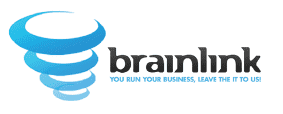On October 17, 2025, New York City announced a modular housing initiative on Staten Island under the Open Door Program, targeting moderate- and middle-income homeownership in the $300,000–$500,000 range. By shifting major scope to off-site, factory-built modules that assemble rapidly on-site, the city aims to cut schedule time, improve quality, and reduce costs by an estimated 10–20% versus traditional builds.
Why NYC is betting on modular
– Speed and predictability: Weather delays shrink when much of the work happens indoors. Field assembly cycles compress from months to weeks.
– Quality control: Factory environments standardize quality, safety, and documentation.
– Affordability and supply: Faster turnover and lower costs expand access for buyers while helping the city add units more quickly.
What this means for mid-sized NYC contractors
Modular does not eliminate on-site work; it shifts where and when work happens. Crews are smaller on-site, but coordination and procurement move earlier, and documentation must be airtight.
Key impacts:
– Bidding and delivery: Expect more RFPs and client requests that specify modular or allow it as a value-engineered option. Estimating must reflect front-loaded procurement, logistics, and factory lead times.
– Technology and controls: Sage 300 CRE and connected project management tools become central for RFIs, submittals, component tracking, and progress billing. Mismatches between factory output and site readiness ripple quickly into change orders.
– Compliance and inspections: Inspection windows compress. Digital submittals, document retention, and automated compliance tracking (COIs, shop drawings, manuals) are essential.
Action checklist for firms using Sage 300 CRE
– Map a modular-ready procurement flow: long-lead components, vendor qualification, and just-in-time delivery.
– Standardize RFIs, submittals, and change management with clear turnaround SLAs.
– Tighten cost codes and WBS to separate factory scope from site scope for accurate job cost reporting.
– Integrate field reporting with your back office to capture delivery, set dates, inspections, and punch in real time.
– Build relationships with prefab manufacturers and transport partners; align on tolerances, craning plans, staging, and site logistics.
– Pilot a modular scope on a smaller project to upskill your team before a full modular build.
Market context
Despite a recent dip in certain commercial starts, major NYC projects continue to advance, including office and luxury multifamily developments such as the 520 Offices tower and the Two Bridges recapitalization. The shared thread across market segments is pressure on time-to-market, cost control, and transparency. Modular strengthens all three by enabling tighter schedules, standardized quality, and clearer documentation.
Risks to manage
– Early errors: Mistakes in the factory can cascade downstream. Invest in design coordination, model reviews, and preproduction mockups.
– Logistics: Street closures, craning, staging, and delivery timing require disciplined coordination with city agencies and neighbors.
– Data gaps: Disconnected systems create blind spots. Ensure integrations between Sage 300 CRE, project management, and field tools.
Bottom line
Modular will not replace every NYC project type, but it is earning a larger share of the pipeline. Contractors and subs that upgrade workflows, integrate their financial and project controls, and train teams on off-site manufacturing will be positioned to win as public and private clients accelerate modular timelines. Treat this as an opportunity to lead, not a threat to react to.
Ready to assess your modular readiness and streamline project controls before the next RFP drops? Let’s talk.











